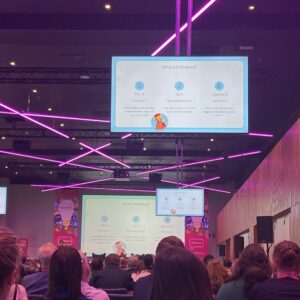
Top Tips for Mobile friendly marketing
When we wrote our very first blog of 2016, we predicted that mobile optimisation had ceased to be a ‘nice-to-have’ and had grown into a ‘must have’ for any company. Here, we’ll take you through a simple and effective mobile marketing strategy that will work for any business.
Optimisation
We’ve warned you about Google’s algorithms – and we’re going to do it again! Google penalises websites that aren’t optimised for mobile use. So, if you want to reach every demographic of consumers, you need to get mobile. Ensure your website displays flawlessly on both desktop and mobile. If you want to test your current web page, use Googles ‘mobile friendly test’ to tell you where you need some tweaking.
App Armageddon
As users become more increasingly mobile savvy, they have also adapted to shorter time-lags between access and information retrieval. Very often browsers can be slower than an app. This is why many businesses are opting to create an app instead of investing in a mobile site.
There are many advantages:
- Immediate data capture of email addresses, phone numbers and more on download of the app.
- Increased brand awareness – the company logo/app icon are constantly visible on the mobile screen.
- The app can be enabled for reminders and notifications, which increases consumer engagement.
- Apps are becoming increasingly enabled for ecommerce. More users are looking to access payment options by mobile. Apps can store credit card information making it easier for users to re-order services.
Make a checklist!
Regardless of whether you create a mobile site or an app, you need to clearly think about where your target customers are. Statistics show that most mobile users will search only for specific sites or search for items they need locally. They use desktop for broader searches.
This means that mobile users are looking for essential information. Follow these 5 steps to make sure your content is top notch.
1.) Have a list of calls-to-action on the homepage.
- Buy tickets now
- Opening hours
- Location/Find us
- Contact details
- Schedule
- Blog
- About
- Follow on. . . . . /Subscribe
2.) When writing content, use smaller bite size chunks and bulleted lists to ensure users can read it with ease. Attract interest with concise headlines that will be visible on the short mobile screen
3.) Prioritise offers and specials on the homepage for mobile. Don’t forget that time sensitive and location specific offers are best for mobile!
4.) Create links that are clear and navigable, a simpler version of the web page itself. Use a more simple version of your website’s fonts and opt for minimalist design. On a smaller screen, the usual content can appear fussier.
5.) Create a smooth offline to online transition. Include user names and handles instore; on menus, brochures, etc. Create catchy hashtags that serve as a prompt to customers instore e.g. #CoffeeAtCelias #TryAndBuy #MochaMondays
With these tips in mind, you have everything you need to make sure your brand is as mobile-friendly as possible!
For more stories like this sign up for our Insights newsletter ›
BACK TO TOP









